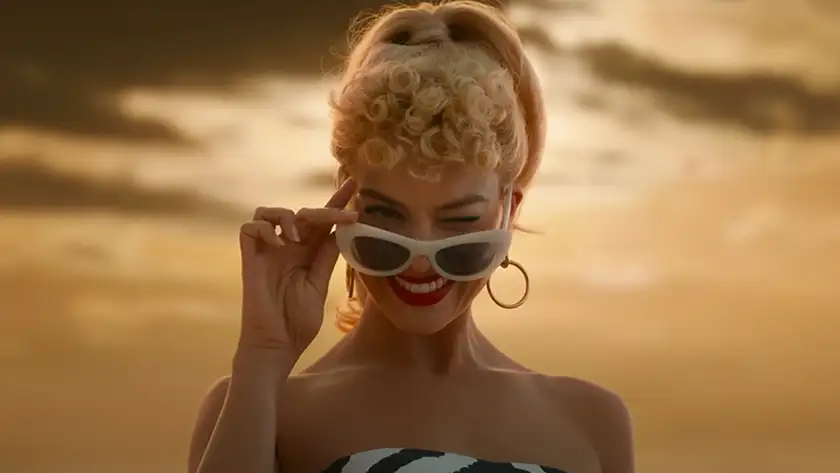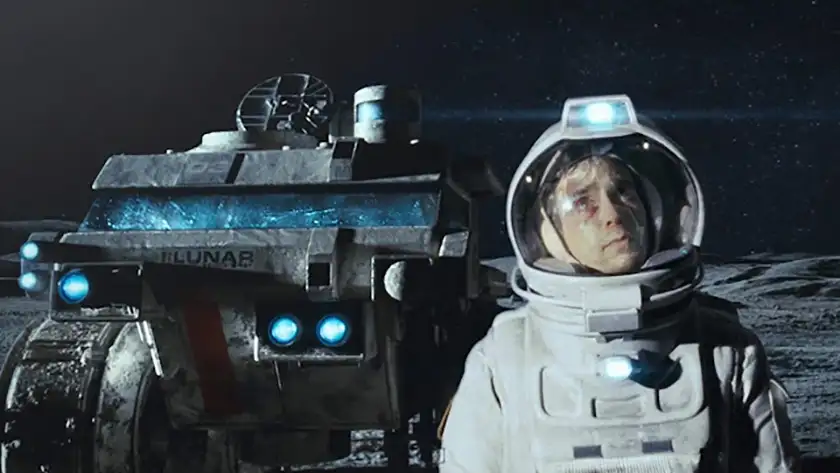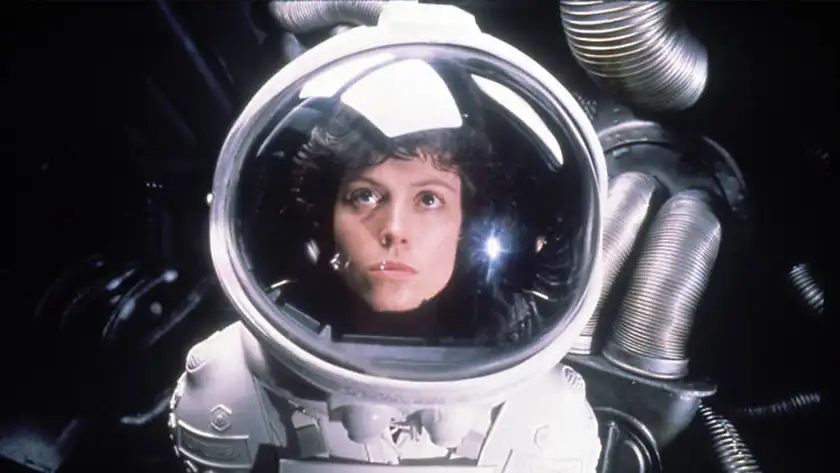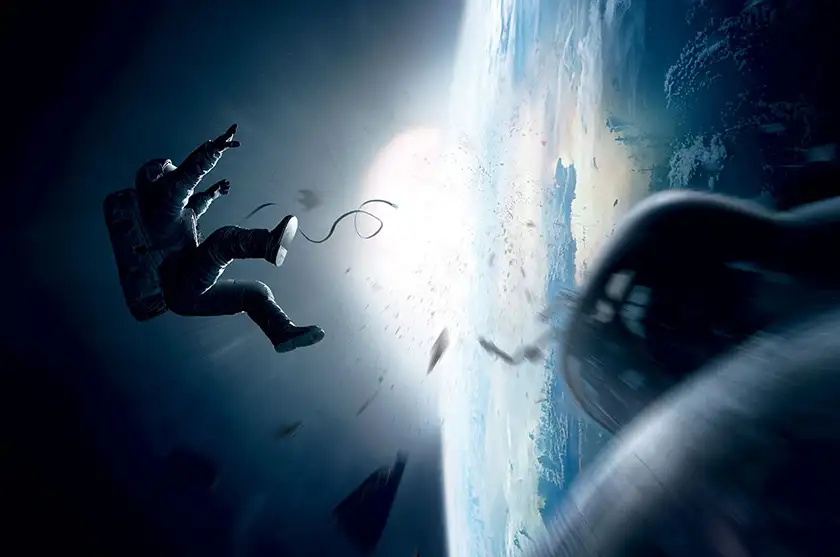Our list of 10 great movies inspired by 2001: A Space Odyssey shows just how influential Stanley Kubrick’s masterwork has been in past decades.
Even with the benefit of hindsight, it’s often taken for granted how enormous the influence of sci-fi epic has actually been on the film industry as a whole. There are way more than 10 movies inspired by 2001: A Space Odyssey, as the project wasn’t just a technical masterpiece, but also a step in the right direction for breaking down the barrier between high-budget blockbusters and prestige pictures with more intellectual material to consider. Kubrick blends these two ideas together for arguably the first time with A Space Odyssey, and it’s no wonder that so many of today’s most popular and successful directors have cited the film as an inspiration for them.
You only have to look as far as the most recent Sight and Sound directors’ poll to find Kubrick’s film voted by huge names such as Martin Scorsese, Edgar Wright and Robert Eggers among the greatest movies of all time – ultimately landing the film at the #1 spot. There’s clearly a universal love for this project, and that’s manifested itself over the years in an unavoidable influence throughout other directors’ bodies of work.
INTERSTELLAR (2014)

Perhaps the most obvious and undeniable example of Kubrick’s ideas embedding themselves firmly in other projects is Interstellar, Christopher Nolan’s sweeping sci-fi epic that explores the future of space travel for human survival. There are traces of Kubrick’s style all throughout Nolan’s filmography, but Interstellar really emphasises many of the same themes that critics are still dissecting about 2001: A Space Odyssey. Namely, the cyclical nature of history and the unknowability of where humanity will evolve.
There are countless theories regarding the nature of the mysterious ‘obelisks’ in Kubrick’s film, which appear throughout time and guide humanity towards its own final evolution – one of which being that humanity itself (from the future) used them to guide their past selves to their own development. Nolan also explores this theme in Interstellar, as future humans leave messages in the past to deliver Cooper to his final purpose. This creates a cyclical nature to both films which Nolan reimagines for a new generation.
BARBIE (2023)

Barbie has an incredibly conspicuous reference to Kubrick’s film in its opening sequence, essentially using the exact same shots but replacing the mysterious obelisks with a giant Barbie doll. It seems like a harmless joke at first, but Gerwig’s decision to reference 2001 actually serves a much greater purpose – it immediately conflates the two films’ central messages and gives the audience an idea of what Barbie is going to be about. It frames Barbie from the beginning as a symbol of something that’s been around from the beginning of time, suggesting that society’s perception of women and their respective role in the world exists outside of modern understanding – an idea which Gerwig later develops through Ken’s discovery of the patriarchy and Barbie’s inability to integrate into real life.
MOON (2009)

There are several different chapters to 2001: A Space Odyssey, but most audiences can agree that its most interesting and captivating is that which explores astronaut Dave Bowman’s conflict with HAL-3000, a rogue artificial intelligence programmed to value the success of the mission over the crew’s own safety. Duncan Jones’ Moon explores many of the same themes, as the film’s protagonist is repeatedly cloned and killed in order to gain maximum profit for the company back home – there’s even a robot with him to keep the truth a secret. Both are films about the exploitation of the individual in pursuit of a more efficient and successful corporate mission, which was just as relevant at the time of Kubrick’s career as it remains today.
ALIEN (1979)

In a similar manner, Ridley Scott’s Alien builds firmly upon the groundwork that was laid by Kubrick regarding the commodification and exploitation of space travel. Both films were made at times of immense political tension in America, and use their respective stories as outlets to condemn the societies in which they were made. Space travel in particular was making huge steps forward, and both Kubrick and Scott were aware of how dangerous this could be for the future of society. The only difference in their assessment of these themes was Scott’s decision to make an all-out horror flick, while Kubrick remained more cryptic and subtle in his dissection of society.
WALL-E (2008)
However, Kubrick’s influence doesn’t remain confined to such mature, cynical stories. The themes that he explored in 2001: A Space Odyssey can also be found clearly in Pixar’s own WALL-E, which takes a more uplifting and hopeful stance on the topic without undermining the severity of these problems. Its depiction of corporate ‘space workers’ as lazy and exploitative, relying on robots and androids to do their work, is something that Kubrick also explored, but Pixar’s film manages to focus on hope and love instead of dread and fear. It’s less of an indictment against society and more of a demonstration of how much better things could be in the future.
ARRIVAL (2016)
One of the many areas where 2001: A Space Odyssey goes much further than other sci-fi movies of the time is in its revolutionary understanding of time and space as something non-linear. From the mysterious obelisks spreading throughout different time periods to Dave’s transformative journey through a world of no dimensions, there are plenty of moments in Kubrick’s film that challenge our linear understanding of how time flows. This is exactly what Denis Villeneuve explores in Arrival, as Amy Adams’ character Louise is forced to communicate with beings that don’t experience time in the same way as humans. Her transformation at the end of Arrival, as she learns to understand time in the same way as the aliens, is almost identical to Bowman’s transformation at the end of 2001, as he evolves toward a further plane of reality.
AD ASTRA (2019)
Ad Astra is among the most interesting and unconventional sci-fi movies of the past decade, and James Gray certainly owes much of his film’s greatness to the ideas that Kubrick first explored in 2001: A Space Odyssey. Firstly, Roy’s journey in Ad Astra is very similar to Dave Bowman’s, as both characters are forced to reckon with the complete isolation of space and the crushing pressure of a mission that seems rigged against them. The way Roy’s experience changes his perception of the universe in Ad Astra is similar, if a little more subtle, to Bowman’s literal transformation at the end of Kubrick’s film. There are obviously plenty of differences, and Ad Astra is much more character-driven in its story, but there’s no denying the influence.
STAR WARS EPISODE IV: A NEW HOPE (1977)
Where 2001: A Space Odyssey was the most innovative sci-fi project of the ‘60s, George Lucas’ original Star Wars was arguably its equal in the ‘70s. Both films completely changed the way that audiences interacted with the genre – the fact that Star Wars still remains such a popular franchise today proves just how effective Lucas’ vision was. Before his original film, sci-fi simply wasn’t a genre that was really given much space in Hollywood. Many critics often credit Lucas with this dramatic U-Turn that Star Wars caused, but even that film wouldn’t have been possible without 2001: A Space Odyssey. While Star Wars is much more accessible for general audiences, Kubrick essentially wrote the formula for how to make space and intergalactic travel look so breathtaking on the big screen.
THE MITCHELLS VS THE MACHINES (2021)
The Mitchells VS The Machines marks another example of Kubrick’s influence seeping into the world of animation, and despite the many narrative and stylistic differences between these two projects, they actually have several themes and ideas in common. The most obvious of these is the danger of artificial intelligence and humanity’s reliance upon it: Olivia Colman’s character Pal is a clear reference to Kubrick’s HAL, both of whom deviate from their objective programming and turn against humanity for their own gain. It’s an idea that’s only getting more and more relevant every year, and the fact that Kubrick was so sharp in his dissection of AI back in 1968 is nothing short of mind-blowing.
GRAVITY (2013)

While Gravity is a much simpler and more character-driven project than 2001: A Space Odyssey, the central concept of one character fighting against the endless expanse of space is something they both have in common. Both Gravity’s Ryan and 2001’s Dave lose their partners and have to rely on their own physical and mental strength to complete their missions, cut off from the rest of the world below them. Their stories are very different, but this central idea of humanity thriving in the face of adversity is a key feature of both projects, and it’s likely that Cuarón was inspired by Kubrick’s film when writing the protagonist’s journey.

